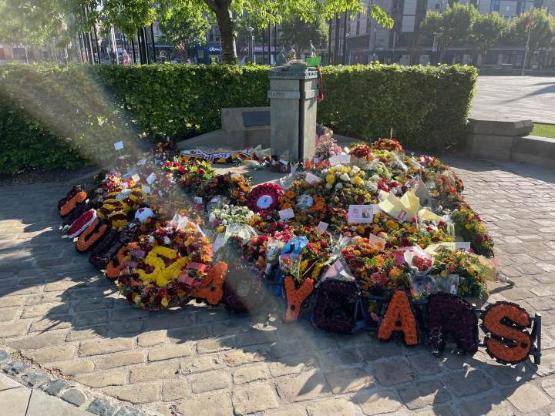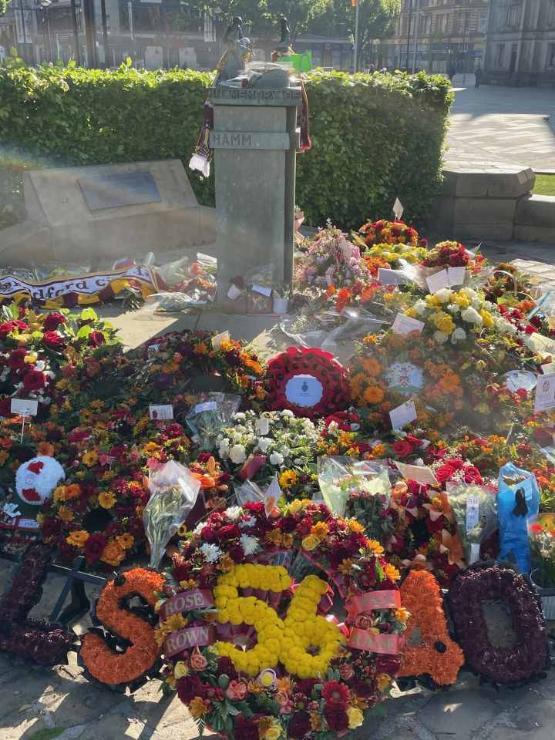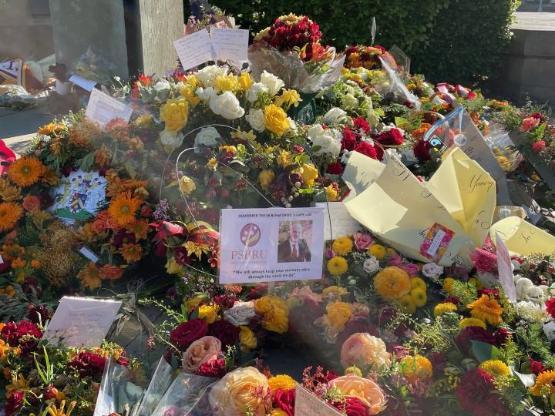The legacy of the Burns Unit as we remember the 56
By Professor Ajay L Mahajan, Director of the Plastic Surgery and Burns Research Unit (PSBRU).

Even now, 40 years on, we are still trying to come to terms with the psychological aspects of it, by being there for one another and remembering ‘the 56’ we lost and the 258 others who were injured on that fateful day.
The disaster led to the Plastic Surgery and Burns Research Unit (PSBRU), located at the University of Bradford, which was founded by Professor David Sharpe OBE. He co-ordinated the response to the massive health disaster with 10 per cent of plastic surgeons in the UK on hand to manage patients and operate on around 30 people a day in four operating theatres.
The PSBRU has been involved in research projects to help improve wound healing and the scars resulting from wounds. It is this research which provides the scientific data for practising evidence-based medicine and ensuring best outcomes for our patients. Our work aims to help deliver state-of-the-art healthcare for the future.

The Bradford Sling is one of the most acknowledged innovations Professor Sharpe designed. It is simple but helps immensely in the daily management of hand surgery patients worldwide. The proceeds from its manufacture and sale helped contribute towards funding the PSBRU for many years.
The activities at the University of Bradford and the research fellows are solely supported by generous donations from the public.
Fundraising events over the years have played a vital role in helping us continue with our research activities at the University of Bradford. These generous acts over the decades are highly appreciated by us. Forty years on, there are various fundraising activities in progress across the Bradford district and further afield. Ongoing donations can be made at the Burns Unit's online donation page
Volunteers were armed with donation collection buckets at Bradford City’s last home match of the regular season in Sky Bet League Two against Fleetwood Town at Valley Parade on Saturday 3 May, as kind-hearted supporters dug deep to contribute to the Unit.
On the 40th anniversary of the fire, on Sunday 11 May, we gathered for our annual commemoration service in Centenary Square, Bradford city centre.

Other fundraising activities this year include from the West Yorkshire Fire and Rescue Service, who are staging #56for56, a £56,000 appeal for the Burns Unit to mark the 40th anniversary of the fire. Donations can be made on the 56for56 online donation page
The unit usually has two research fellows, ‘The Bradford City Supporter’s Fellow’ and ‘The David Sharpe Fellow’. More fellows have been recruited in collaboration with Pinderfields Hospital’s plastic surgery department in Wakefield. The public helped to establish the PSBRU and without their support, it would not exist.
I succeeded Professor Sharpe as director of the PSBRU. I work with Associate Professor, Dr Kirsten Riches–Suman from our Centre for Skin Sciences (CSS). To date, various research projects have been carried out under the supervision of CSS staff - Vladimir Botchkareva, Natalia Botchkareva, Ian Naylor, Val Randall, Julie Thornton and Des Tobin.
The Unit’s research work continues apace as burns and other injuries result in scarring. This is particularly bad following burn injuries. Apart from the unsightly appearance of the scars, adverse scarring can lead to contractures that can affect movement of limbs.
Previously, we have completed projects on how we can improve wound healing, particularly in those where healing may be impaired such as the elderly.

We have focused on the role of steroid hormones, particularly oestrogen and DHEA, bone morphogenetic protein signalling in wound repair.
Focus has been on the role of hair follicles and associated signalling molecules in skin repair and the modulation of wound healing responses in cultured human fibroblasts and keratinocytes [the primary cells of the epidermis, the outermost layer of skin].
Our research has shown that vitamin D, also known as ‘sunshine vitamin’, could be a cost-effective treatment in managing burns and chronic wounds.
Modern technology also aids our research, which included using facial recognition computer technology to aid clinicians in their initial burn assessments which is vital for the initial management of patients with burns. We have also looked at the possible role of emerging cell-based therapies – adipose-derived stem cells (ADSC).
Research lays down a strong foundation for our young doctors who set out to pursue a career in plastic surgery and encourages them to embark on innovative projects.
Plastic surgical trainees have studied for a higher research degree via two-to-four-year placements in the PSBRU. MD/MPhils degrees were awarded to 18 fellows; while six were awarded a PhD, a notable achievement within the short time period.
In addition to numerous conference proceedings, 41 peer-reviewed publications were published in high-impact journals.
We are proud of the fact that, the PSBRU is one of only 20 research units across the UK that are registered on the British Association of Plastic, Reconstructive and Aesthetic Surgery (BAPRAS) website. It has had 30 research fellows over the years most of who are established consultants in the various parts of the UK.
